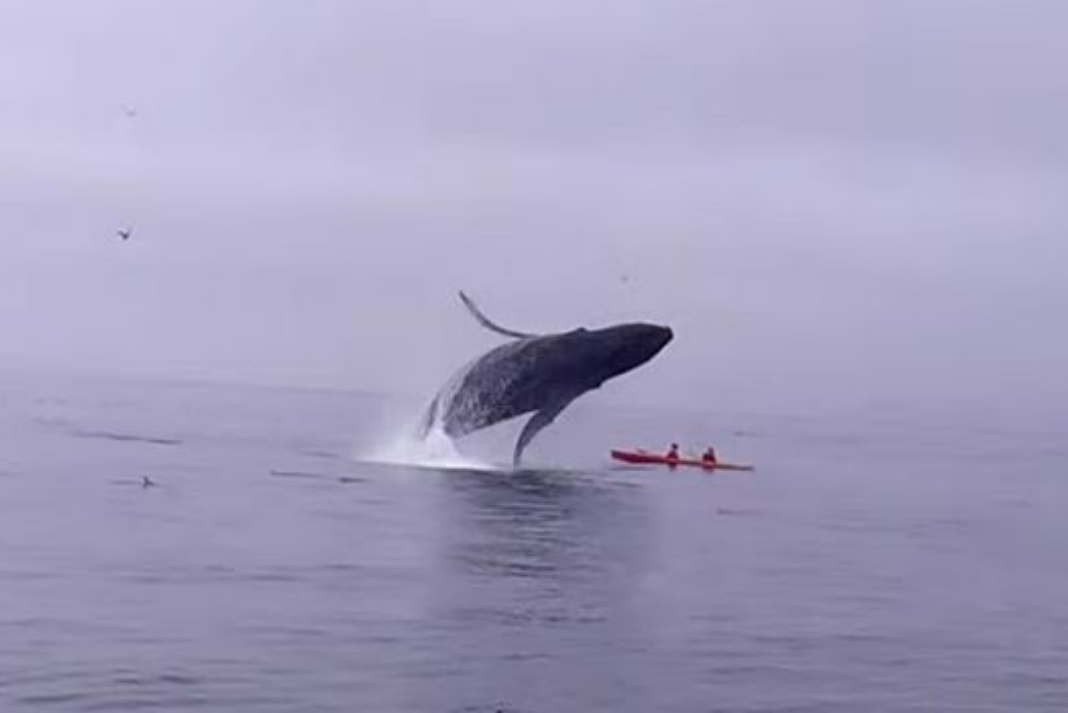Close encounters with whales can give you moments of lifelong inspiration, but kayak whale watching is not without risk to both parties. One flick of a three-meter fluke can capsize a kayaker before you can say, “Blowhole!” And pressure from curious kayakers can push shy whales from critical habitats.
With these hazards in mind, experienced whale watchers and seasoned kayak guides have developed some agreed-upon kayak whale watching guidelines. Follow these rules when approaching any species—from greys and orcas on our West Coast to Tongan humpbacks.
Kayak Whale Watching Guidelines
1) Take an indirect approach
Never paddle directly towards whales, especially from behind or nose-on. Always approach slowly at a tangent that will keep at least 100 metres between you and the whales. Remember to factor in wind and currents.
2) Stay out of the nursery
Avoid mothers with calves when kayak whale watching. Think 40-tonne angry mamma bear.
3) Beware rowdy kids
Be wary of juveniles, identifiable by their shorter length and smaller fin size. Like any young, curious animal, they’re tempted to touch everything, including whale watchers!
4) Announce your presence
Don’t surprise whales. Tap gently on the deck of your kayak to let them know you’re there.
5) Mind the shore
Unless whales are near shore, try to keep your whale watching group between them and the shore so they don’t feel trapped. However, when whales are close to shore they’re likely using it for shelter or feeding, so move off shore to allow them a wide passage.
6) Allow an exit
Never block a whale’s escape. You don’t ever want the only way out to be through you!
View this post on Instagram
Remember these rules for kayak whale watching
Remember that whales have had enough stress from humans. Not only did we nearly wipe out these gentle giants through overhunting; we overfish and pollute their habitat, pressure them with boat traffic and trap them in abandoned fishing gear. So when kayak whale watching, remember the golden rule: if any wild animal changes its behavior due to your presence, you are too close.
Two additional resources helpful to paddling in whale waters are NOAA’s guidelines to viewing marine life and the Kayak Educational Leadership Program from Be Whale Wise.




